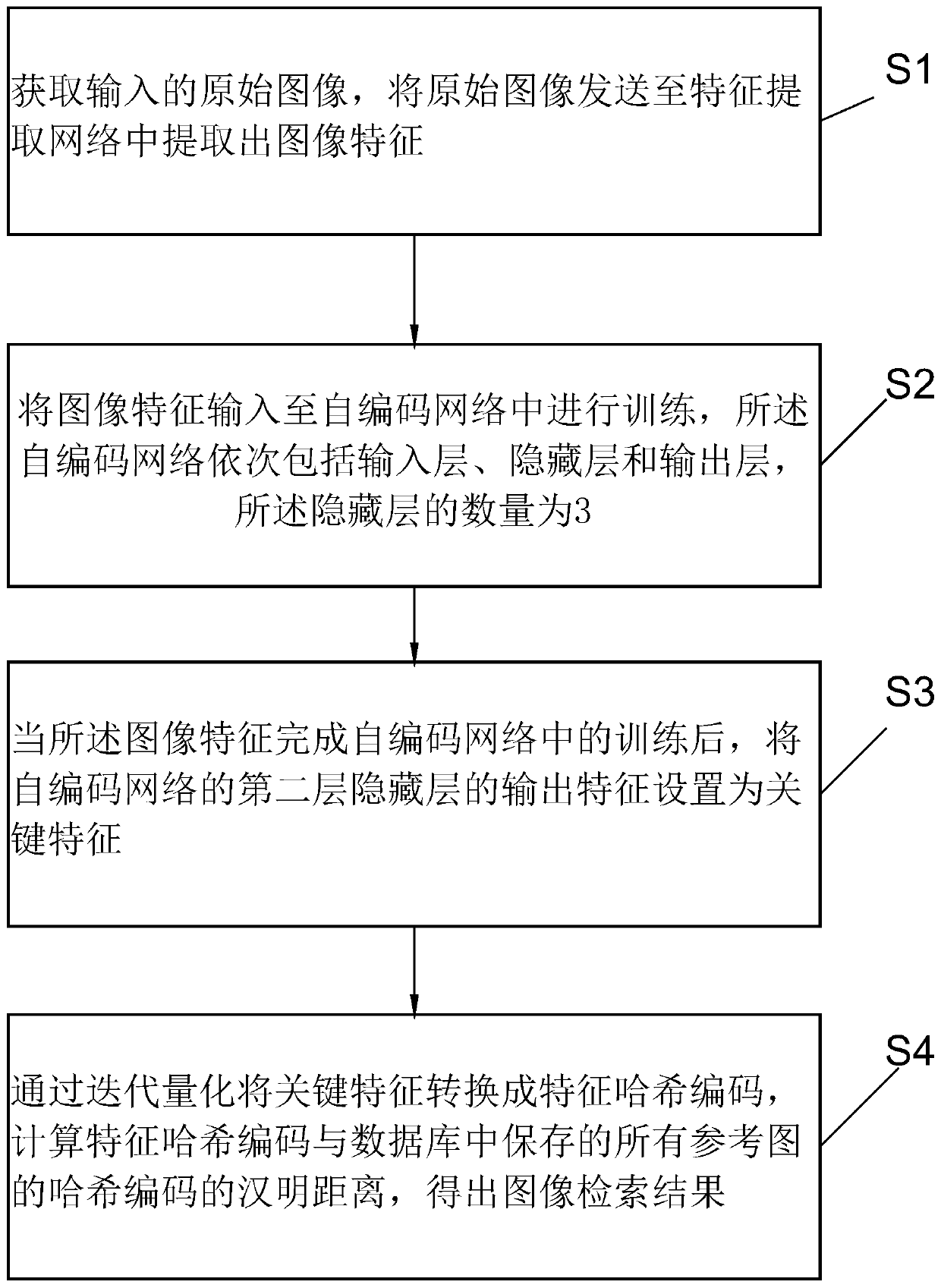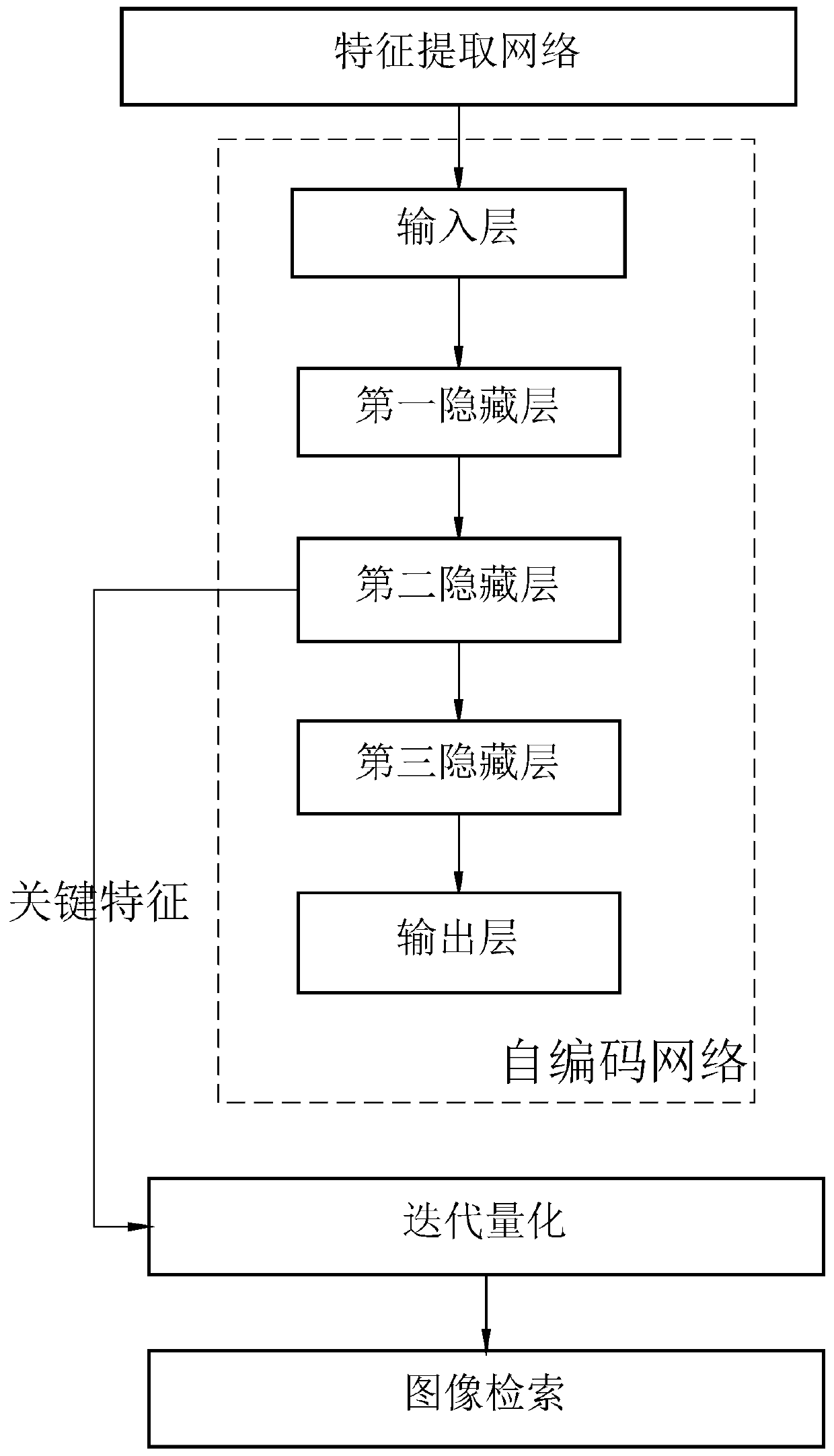Image retrieval method and device based on self-coding pre-dimension reduction and storage medium
An image retrieval and self-encoding technology, applied in the field of image recognition, can solve problems such as affecting the accuracy of image retrieval, loss of more feature information, semantic gap, etc., to improve retrieval accuracy and retrieval efficiency, and reduce the time spent on computing. , the effect of avoiding the loss of feature information
- Summary
- Abstract
- Description
- Claims
- Application Information
AI Technical Summary
Problems solved by technology
Method used
Image
Examples
Embodiment Construction
[0033] At present, with the development of image recognition technology, content-based image retrieval is one of the methods that can retrieve images from massive databases. Starting from the characteristics of the query image, through feature matching, it can be matched from the image database to similar Image technology. After the feature extraction of the image, the feature is quantized and encoded, and finally the similarity between the codes is calculated, and the corresponding similar images in the database are returned from the largest to the smallest similarity. Because this retrieval method does not need to manually annotate the image, it has high intelligence and is widely used in military, architectural design and face recognition systems. The traditional method mainly uses the computer to extract the underlying visual features of the image for recognition, but most of these underlying visual features are global features. When it comes to more complex retrieval requ...
PUM
 Login to View More
Login to View More Abstract
Description
Claims
Application Information
 Login to View More
Login to View More - R&D
- Intellectual Property
- Life Sciences
- Materials
- Tech Scout
- Unparalleled Data Quality
- Higher Quality Content
- 60% Fewer Hallucinations
Browse by: Latest US Patents, China's latest patents, Technical Efficacy Thesaurus, Application Domain, Technology Topic, Popular Technical Reports.
© 2025 PatSnap. All rights reserved.Legal|Privacy policy|Modern Slavery Act Transparency Statement|Sitemap|About US| Contact US: help@patsnap.com



